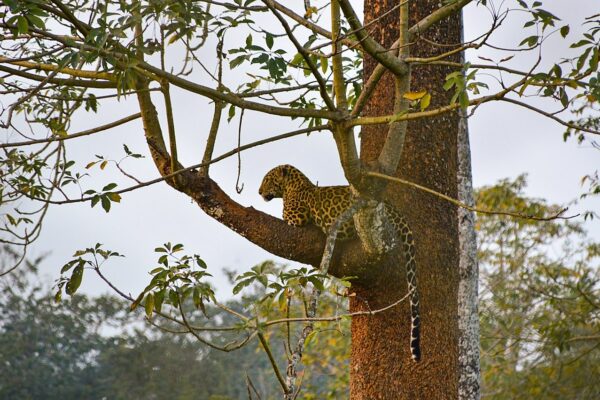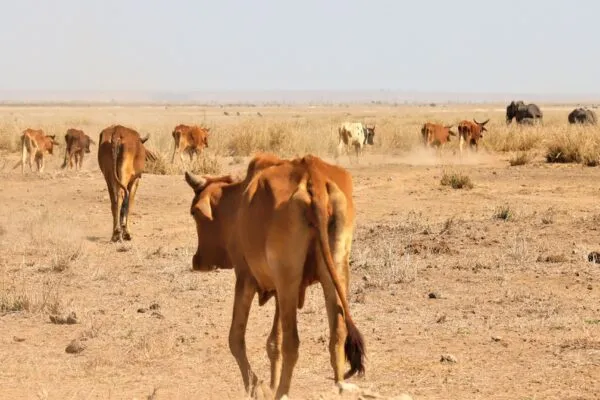23 Shocking Cases of Feral Children Exposing the Dark Side of Human Society
After surviving with wild animals, their return to human ways of living didn't go so well
Do you ever wonder, where did the inspiration for Mowgli or Tarzan come from? Everyone is familiar with their stories – a human child is taken care of by animals in the wild. Sure, these are fictional takes on cases of feral children to provide excellent examples of harmony between man and wild animals, and to inspire mankind to be loving and kind toward the animals.
However, there are real cases of feral children, recorded from all across the world, where human children were raised by wild animals or birds. Feral children are human children who have lived away from human contact from a very young age with little or no experience of human care, love, or social behavior, but crucially of human language. In many cases of feral children, human children were found in the wild living among the animals.
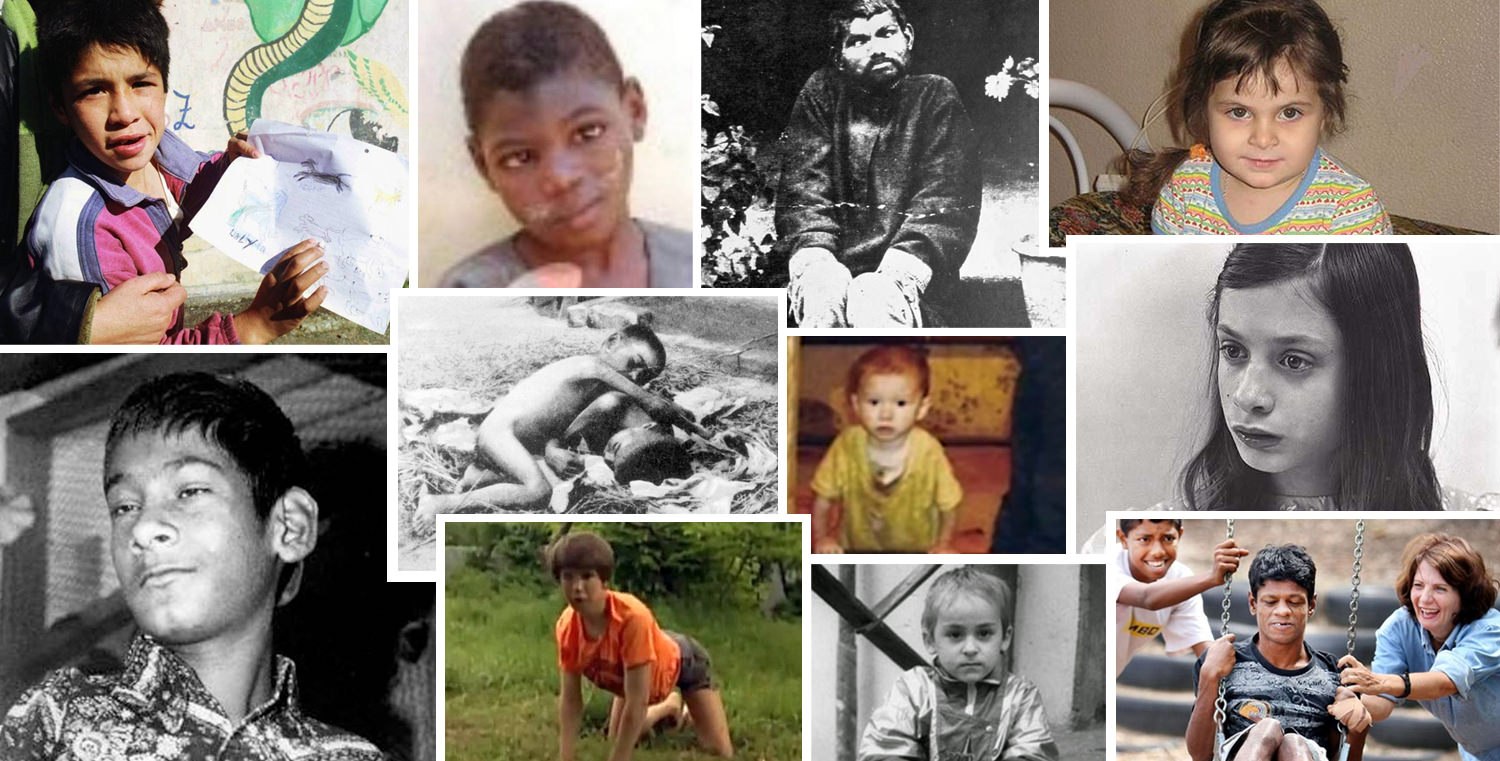
Many cases are of abuse and neglect by family, where the child was isolated from human contact or was forced to live with animals in the most inhumane manner. Some of these cases of feral children have happy endings, but most of them are heartbreaking. Here is a list of feral children cases that will move your heart by the cruelty of humans and the generosity of wild animals.
Table of Contents
Feral Children Raised by Animals
Kamala and Amala – India
There are many cases of feral children recorded in India. Referred to as ‘wolf children,’ Kamala and Amala, whose ages were assessed to be eight and two respectively, were discovered in 1920 in the jungles of Godamuri, India.
The two girls were raised by a she-wolf who had them among her pack. A reverend, J.A.L. Singh, noticed and rescued the girls. He took them to his orphanage where he and his wife looked after them and tried fitting them back into the human way of living.
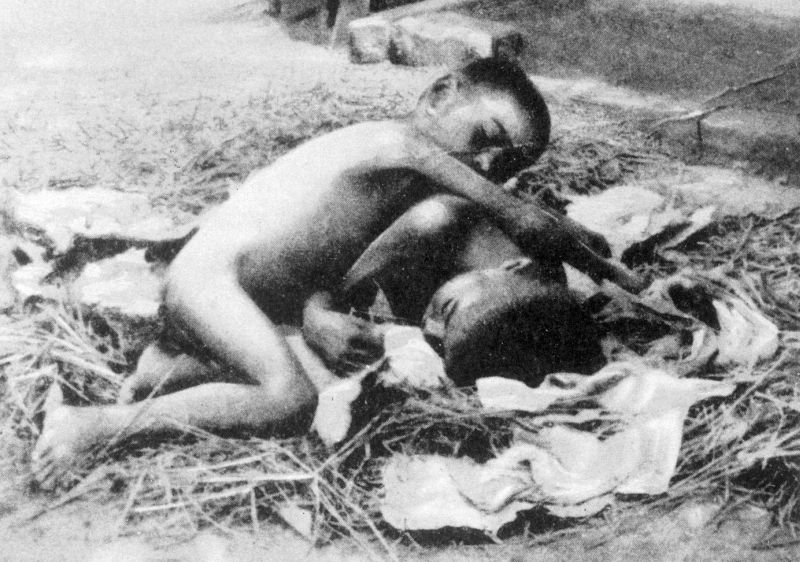
Wolf Children – Kamala and Amala| Image: Timeline
The girls were ‘wolfish’ in behavior and appearance, very fond of raw meat, and disliked the cooked food. Like a wolf, they walked on all fours, licked all liquids with their tongues, and ate their food in a crouched position.
They completely shunned human society, never slept at night, and howled. In September 1921, Amala fell ill and died. Whereas, Kamala grew up learning a few of human etiquette, learned to eat off of a plate, and learned to speak a few words. However, she grew weak and died in 1929.
Mthiyane – South Africa
South African boy, Saturday Mthiyane was adopted by monkeys after he was abandoned by his mother. He spent a year with them before he was found at the age of 5. Nobody knew his identity and therefore, he was named for the day of the week on which he was found. Having spent a year with animals, he used to walk on all fours. He also refused to eat cooked food.
He was taken in by an orphanage, where he only learned to walk upright again at the age of 15. However, even after being rescued, he hadn’t learned to talk, as a local publication discovered after following up on his case.
Marina Chapman – Columbia
Though many scientists and psychologists doubted Marina’s story, her story is heart-touching and inspirational. As the story goes, she was kidnapped from her village as a young girl and was abandoned in a forest at the age of 4 or 5, where Capuchin monkeys adopted her and took care of her. She learned to climb trees, run, and forage for food from the monkeys.
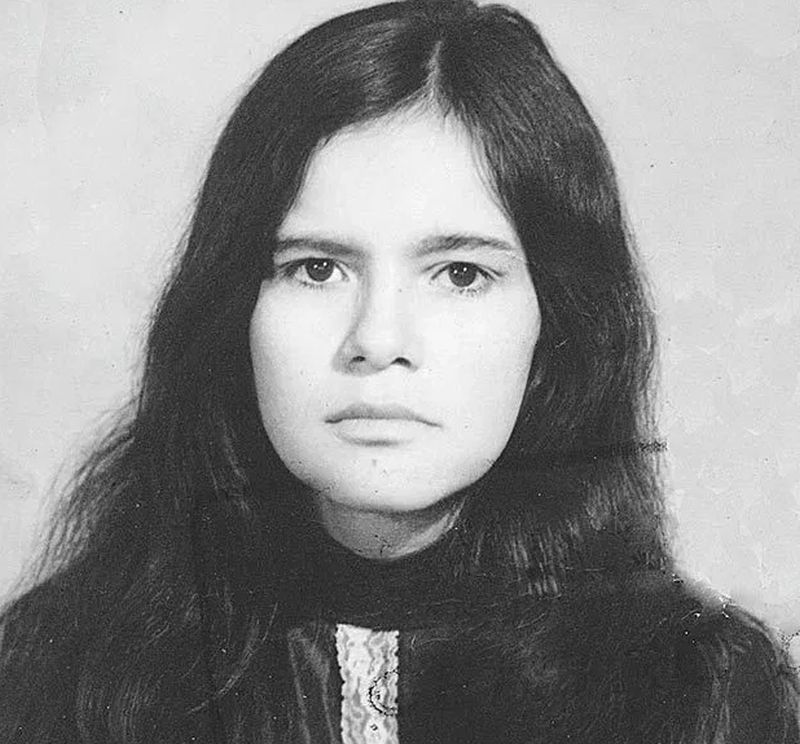
Image: The Sun
Once she had a bad case of food poisoning and one of the monkeys forced her to drink a lot of water which made her vomit. A few years later, hunters found her and sold her to a brothel, from where she somehow escaped.
She lived on the streets for some time and later was adopted by a family. She learned the etiquette of human society and became a nanny, got married and had children.
The Wolf Boy of Hesse – Germany
In the year 1341, a young boy was captured by soldiers while he was living with a pack of wolves in the forest. He did not speak and growled at the humans. The boy could not stand up straight and walked on all fours. He was able to jump long distances with seamless agility.
This boy was brought back to civilization by the monks who cared for the orphan children. They tried to tame the boy in the hope to make him a good Christian citizen of society. They tried to mold him into human ways of living. But, he was scared. He avoided human contact and cooked food as he had become accustomed to raw meat in the wilderness.
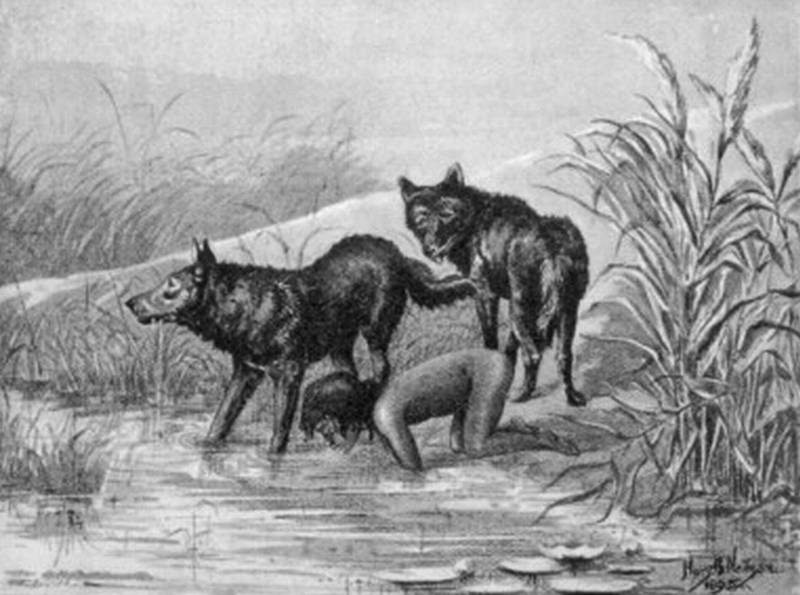
Representational Image: Cyber Breeze
He quickly became malnourished and died soon after he was captured. Since the boy could not speak, the monks never learned how the boy ended up in the forest.
Dina Sanichar – India
In 1872, the hunters came across a young boy, walking on all fours together with a pack of wolves in the forest of Uttar Pradesh. When the hunters tried to bring the boy with them, the wolves were fiercely trying to protect him. Eventually, the wolves were shot, and the child was captured and brought back to human society.
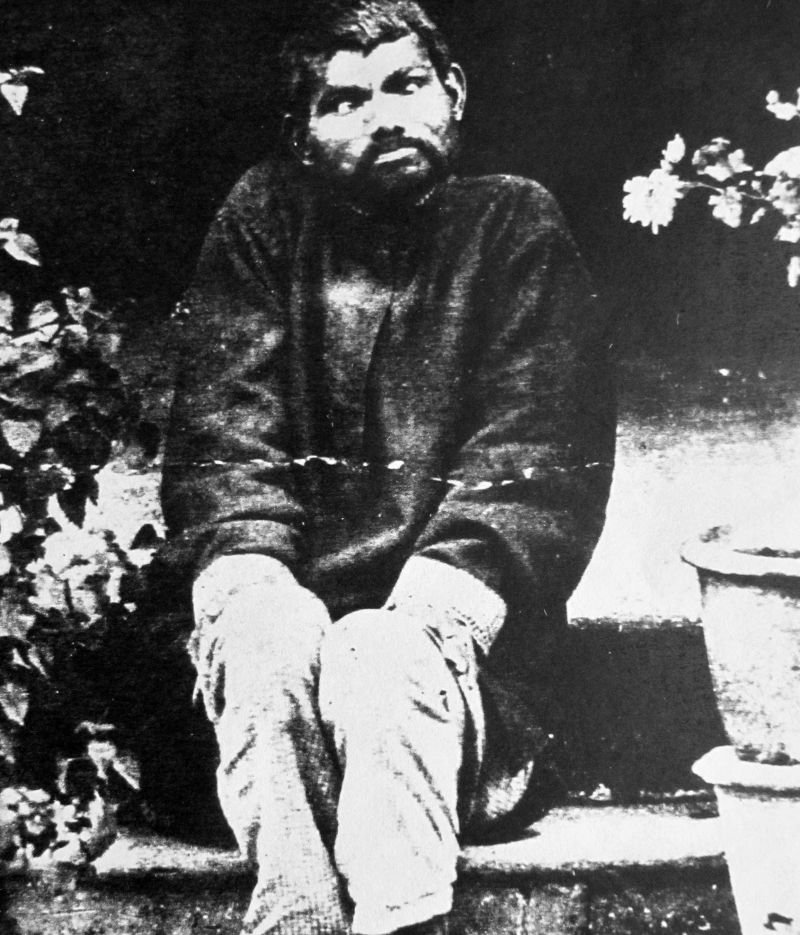
Image: Timeline
The boy was brought to an orphanage and given the name Dina Sanichar, where he did not interact with other humans and made animal noises. He consumed raw meat and chewed on bones like a wolf. When another feral child was found and brought to the orphanage, Dina found a friend.
They both isolated themselves from humans and spent their time together. Dina spent another 20 years in captivity and most he was able to do was stand up straight on two feet, get dressed on his own, and eat off of a plate.
Sidi Mohamed – North Africa
In 1945, Sidi Mohamed was found living with ostriches in North Africa. The boy told anthropologist Jean-Claud Armen that he found an ostrich nest when he was about 5-year-old and the birds became accustomed to him. He stayed there with the birds, eating grass with them and learning to run at high speeds, sleeping under their wings at night.
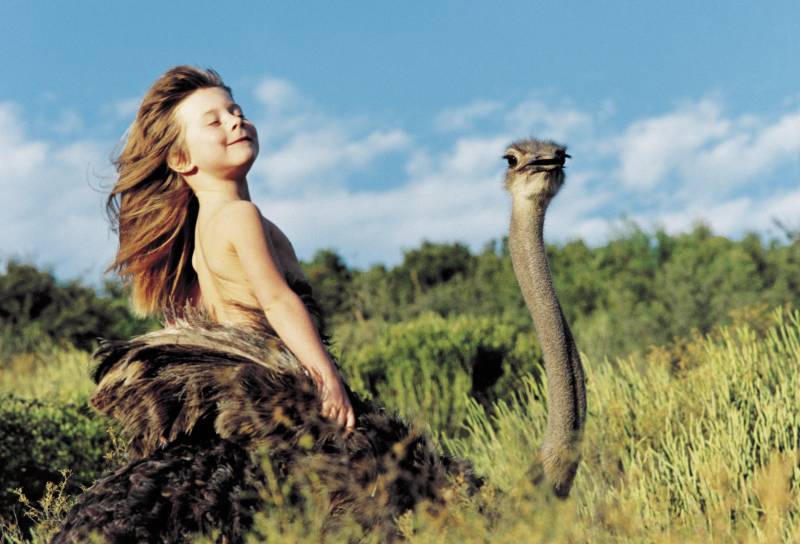
Representative Image: The Sun
At the age of 12, he was found by hunters and returned to his parents but always longed for his life with the birds. As it is not clear whether Armen did further research to verify the facts, the story seems to rely on the boy’s truthfulness.
Lyokha – Russia
In December 2007, Russian authorities brought in a boy who was living with wolves. By his looks, he seemed to be around 10 years old but may have been much older. He did not speak and displayed wolf-like behavior. Some villagers found him in a lair made from leaves in freezing temperatures, fairly close to Moscow.
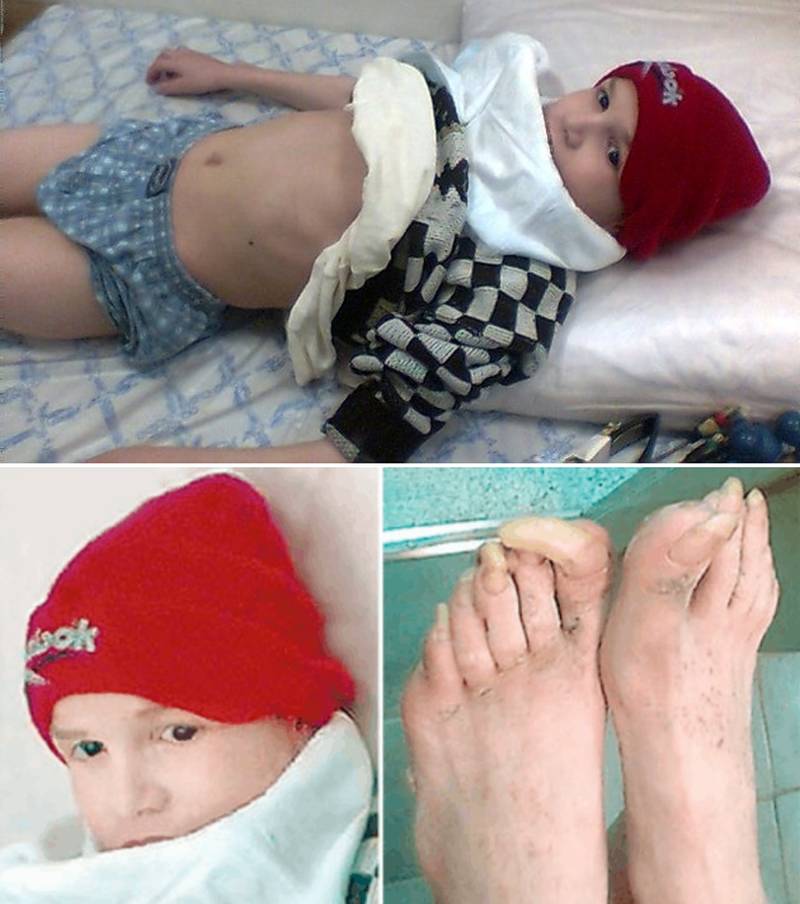
Image: Tass / True Activist
The authorities brought him in, showered him, and cut his nails. The doctors were trying to figure out his condition and were running some tests. But he managed to escape from the facility within 24 hours. Since then, nothing is known of his whereabouts.
Ivan Mishukov – Russia
Unlike other feral children, who somehow ended up in the wilderness, Ivan chose to leave his house and started living on the streets of Moscow. Born in 1992, Ivan lived with dogs for about three years. He left home to escape his mother’s alcoholic and abusive boyfriend and entered the ranks of a feral dog pack.
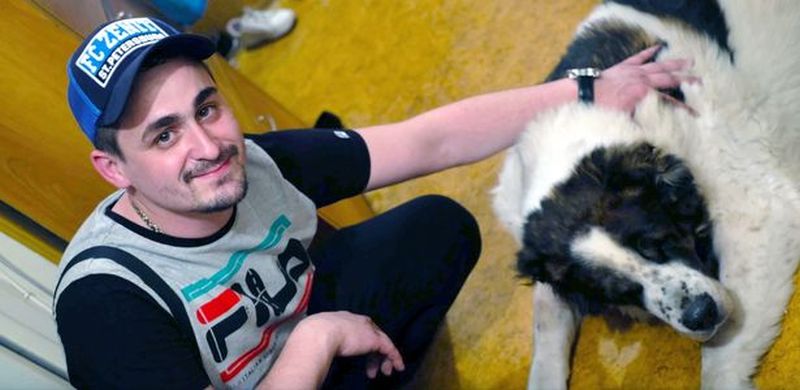
Image: Mirror
Ivan gained the trust of dogs by providing them with food, and in return, they protected him. He was taken by the authorities three times, but he subsequently escaped. He was ultimately captured by leaving a lot of food outside of a restaurant baiting the dogs that were protecting him.
He reconnected with society and learned language again. Later he was adopted. He is now 27 and living happily.
Bello – Nigeria
Bello, sometimes referred to as the ‘Nigerian Chimp Boy’ by the media, was founded in 1996. Unsure of his age, many estimated that he was about 2 years old when he was discovered. He was found in the Falgore forest, Nigeria, and was both physically and mentally disabled, a possible explanation for his abandonment at six months of age (a very common practice within the Fulani tribe).
Somehow, the chimpanzees living in the forest took him under their wing and raised him. He took on many chimpanzee behaviors, walking like them and exhibiting many of their animalistic traits.
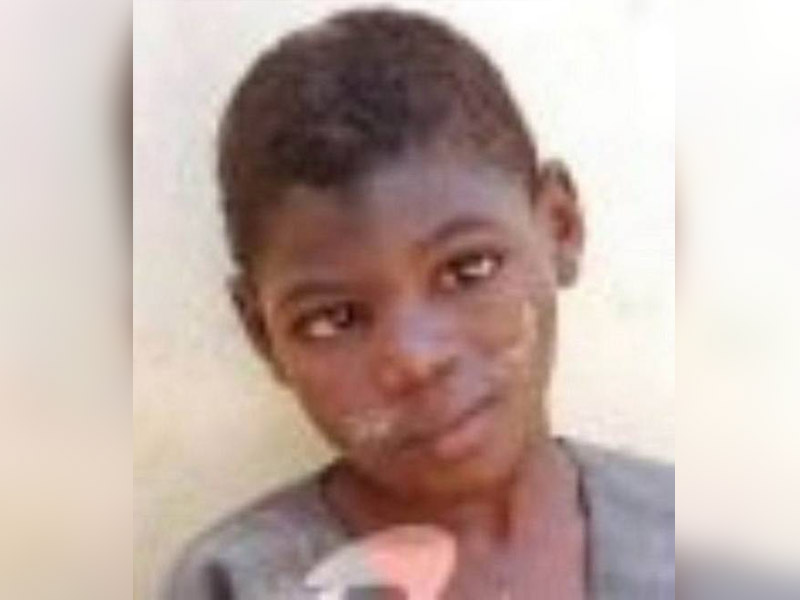
Image: Smashing Lists
After the rescue, he was put in Tudun Maliki Torrey, a home for displaced children in Kano, Nigeria. He disturbed other children within the home and continued to behave like animals. Six years later he was much calm, though he still behaved like a chimpanzee.
Bello never learned to speak. In 2005, he died of undetermined causes.
John Ssebunya – Uganda
Unfortunate circumstances forced this boy to run away from home and live in jungles. Also known as ‘The Ugandan Monkey Boy’, John Ssebunya ran away from home after witnessing his father murder his mother. He fled to the forest where he was taken care of by green African monkeys.
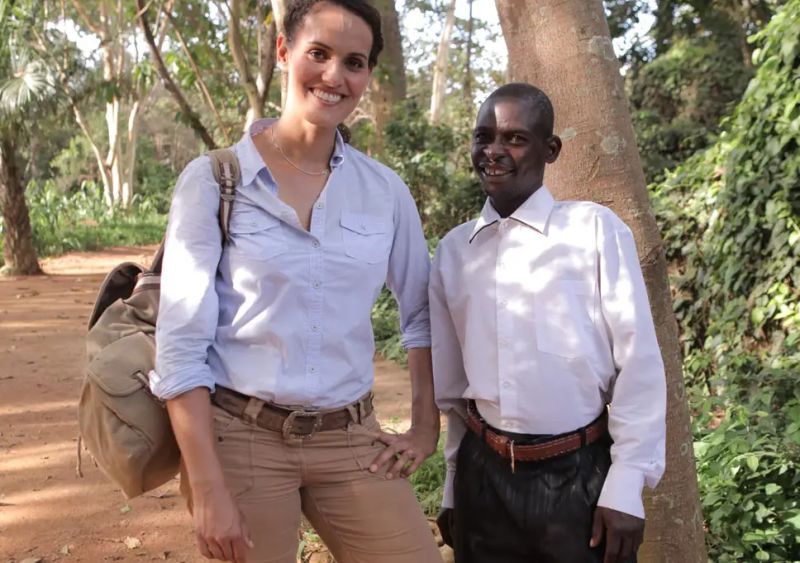
Image: The Independent
A local tribeswoman found him hiding in a tree in 1991 and brought help. When the villagers tried to separate John from the monkeys, both fought back. In the end, he was captured and taken back to the village. He had many injuries on his body, mainly on his knees from walking like monkeys.
Later he was sent to an orphanage where he learned to talk and other social etiquettes. Now, he sings with the Pearl of Africa children’s choir and exhibits little to no animalistic behavior.
Shamdeo – India
In 1972, a 4-year-old boy was found playing with wolf cubs and displayed the same traits as wolves in a forest in India. He had long, hooked fingernails, calluses on his hands and knees, sharpened teeth, and had craving for blood. He loved darkness, hunting chickens, and befriending dogs and jackals.
He was taken to the village of Narayanpur and lived among the villagers who named him Shamdeo, some referred to him as Ramu. He never learned to talk but was able to learn sign language. Eventually, he weaned off raw meat and transitioned to a more humane diet.
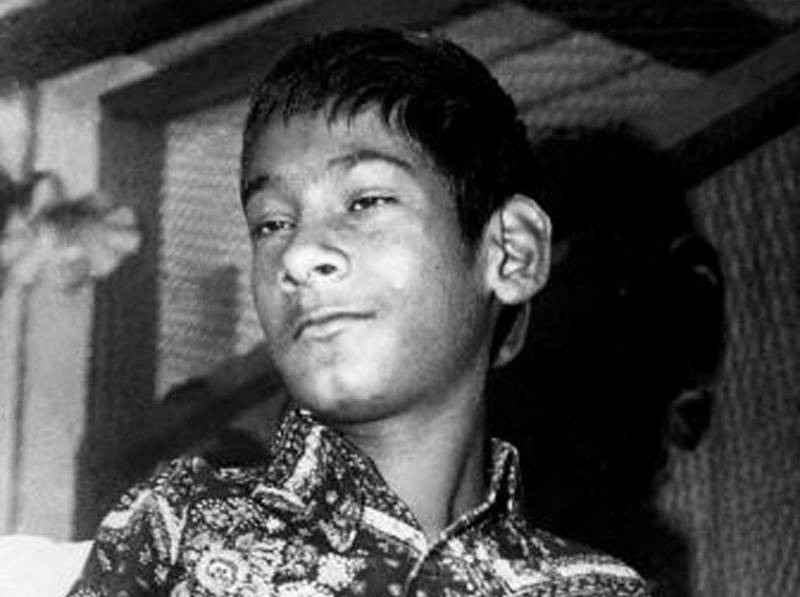
Image: Upbeat News
In 1978, he entered Mother Teresa’s Home for the Destitute and Dying in Lucknow, where he was renamed Pascal and visited by English travel writer and novelist Bruce Chatwin. Shamdeo/Pascal died in 1985.
Marcos Rodriguez Pantoja – Spain
Marcos Rodriguez Pantoja is a noted feral child, who was reportedly sold to a hermetic goat-herder at the age of seven but soon found himself alone in the mountains. Having suffered years of beatings from his stepmother, he preferred the company of animals in the wild. He lived for 12 years in the jungle with the wolves and other animals.
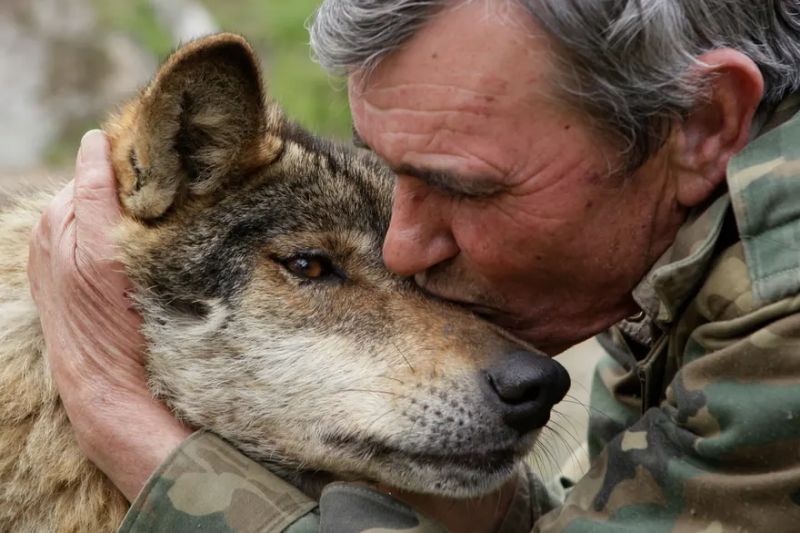
Image: The Guardian
The Civil Guard found him and brought him back to human society. He was admitted to the Hospital de Convalecientes of the Vallejo Foundation in Madrid until he was reintroduced as an adult to live in society.
He worked really hard to integrate back into society and was partly successful as people deceived him many times, given his limited experience. He still hasn’t forgotten his time in the wild and loves animals, especially wolves.
Marie -Angelique Memmie le Blanc – France
Also known as ‘The wild girl of Champagne’, Memmie Le Blanc was discovered in 1731 in the woods surrounding the village of Songi, France. The little girl consumed birds, frogs, fish, leaves, branches, and roots. Given a rabbit, she immediately skinned and ate it. She was a fast runner and had incredibly sharp eyesight.
According to a contemporary witness, the famous scientist Charles Marie de la Condamine, the girl’s fingers, and in particular her thumbs, were extraordinarily large. She was able to dig out roots using her thumbs and swing from tree to tree like a monkey.
When the Queen of Poland, the mother of the French queen, passed through Champagne in 1737 to take possession of the Duchy of Lorraine, she heard about the girl and took her hunting, where she outran and killed rabbits.
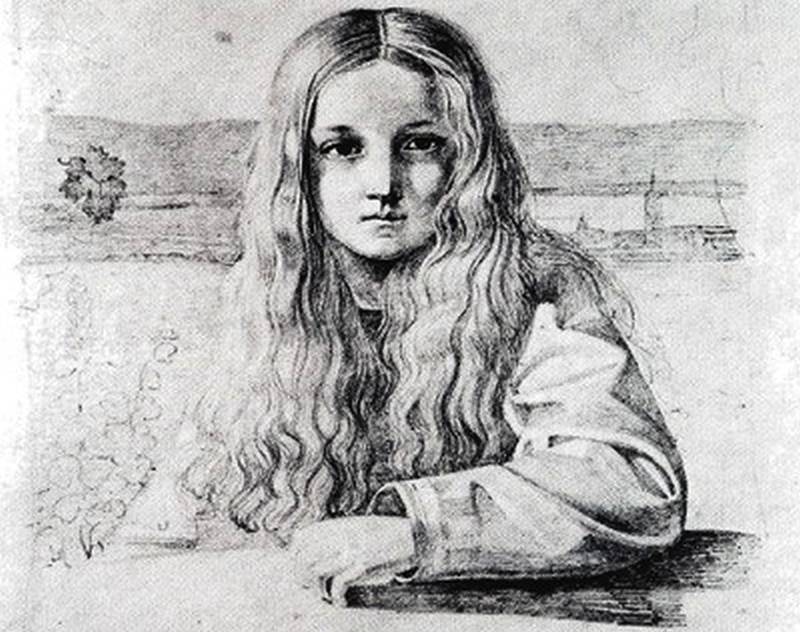
Image: Medium
Very little is known about the next ten years of her life. In 1747, now a young woman fluent in French, she moved to a Parisian convent to become a nun, where she met the famous scientist Charles Marie de la Condamine.
She had many patrons helping her throughout her life. In 1755, Memmie’s biography was published by herself and one of her patrons and her biographer Madame Hecquet. But life got difficult after that as she lost all her patrons and was selling artificial flowers.
Feral Children Isolated/Abused by Family
There are some cases where human children, despite living in human society, lived in the company of birds and animals. These children were neglected or abused by their families while being isolated from human contact or forced to live with animals around them.
Andrei Tolstyk – Siberia
Andrei Tolstyk was born with hearing and speaking deficiencies, giving his parents reason enough to abandon him in a remote area of Siberia, close to Lake Baikal. However, the child was adopted by a guard dog who taught him to survive like a guard dog. Tolstyk had strong teeth, sniffed the food before eating it, and was afraid of people.
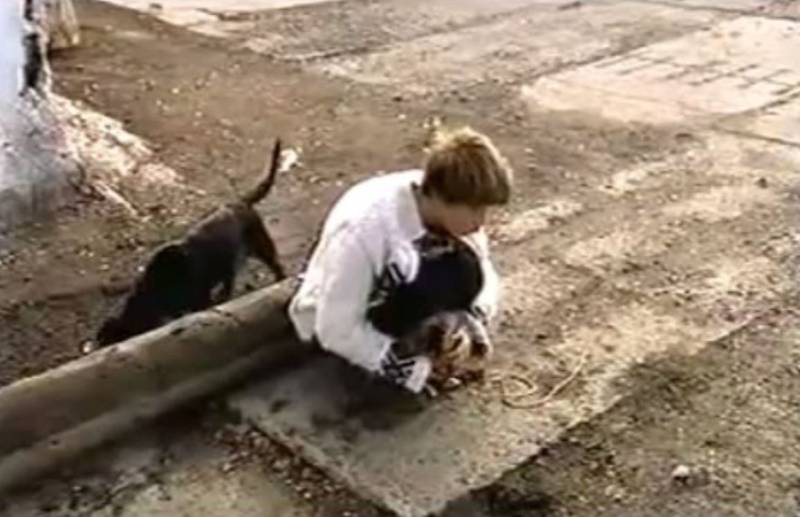
Representational Image: Honest to Paws
He was found by social workers who wondered why the boy has not enrolled at the local school. Deprived of human contact for so long, the boy could not talk and had adopted many dog-like traits including walking on all fours, biting people, and general feral behavior. It took him two weeks before he began to walk on two legs after being rescued.
Peter, the Wild Man – Hanover
The origin of Peter, the Wild Man of Hanover, is still a mystery. In 1725, when he was about 11 years old, he was found naked and disheveled, living alone in a forest in Hanover, Germany. He could not speak, walked on all fours, ate with his hands, and preferred to be unclothed.
He immediately caught the attention of King George I of Great Britain, who brought him back to London and kept him as a “human pet” at Kensington Palace.
He became the ward of Princess Caroline (who later became the queen), who made sure he gets an education. But, despite all his efforts, he never learned to speak and often behaved uncivilized in public. He entertained the royals for some time, but the royalty got bored of him.
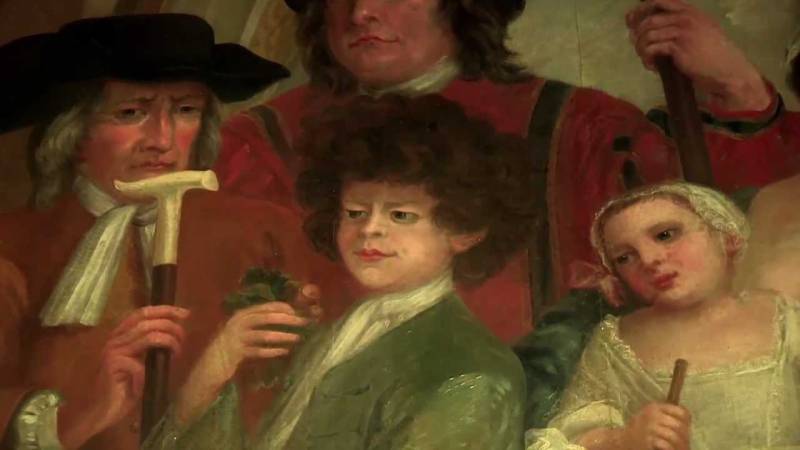
Image: Wikipedia
However, the king sent him to a farm in Hertfordshire, where a family was paid to take care of him. Peter had a tendency to wander off, and in 1751 he went missing. When he was found and returned home, the family made a leather collar for him with his name and farm address to ensure his safety. He died in 1785.
It is assumed that Peter was abandoned by his family as he suffered from Pitt-Hopkins Syndrome, a rare neurological disorder characterized by learning disabilities and an inability to develop speech.
Oxana Malaya – Ukraine
Oxana was a normal child at birth, but she was neglected by her alcoholic parents. One night they left her outside and for warmth, the 3-year-old crawled into a farm kennel and curled up with the dogs. When Malaya was found by authorities, she was 7 years old, but she could not talk, lacked many basic human skills, and physically behaved like a dog.
She ran on all fours, barked, slept on the floor, and she ate and took care of her hygiene like a dog. The social services removed her from her parents’ custody.
She was eventually transferred to the foster home for mentally-disabled children in Barabol. She underwent years of specialized therapy and education mending her physical, social, and behavioral traits. Upon adulthood, Malaya had been taught to control her dog-like behavior, she learned to speak fluently and intelligently. She now lives in a clinic in Odessa, working with the hospital’s farm animals.
Sujit Kumar – Fiji
Unlike other cases, Sujit was not adopted by animals, but he spent his childhood locked up with chickens in a chicken coop and behaved like them. His mother committed suicide and then his father was murdered. He then fell into the care of his grandfather, who locked the six-year-old boy in a chicken coop, where he lived for years.
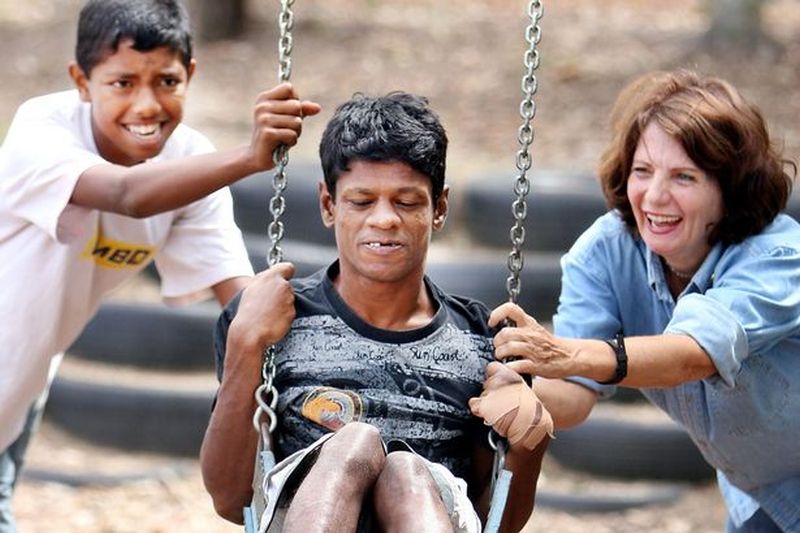
Image: Mirror
One day, he was found by welfare officers in the middle of the road acting like a chicken. He did not speak, pecked at his food, crouched on a chair as if roosting, and made rapid clicking noises with his tongue. He had been tied to his bed for 20 years after being found. He hasn’t learned to speak and slowly is learning the etiquette of human society.
Psychologists and a team of scientists have been examining Sujit and his bizarre behavior. He is now being taken care of by Elizabeth Clayton, widow of New Zealand mountain climber Roger Buick, who died on Everest in 1998.
Vanya Yudin – Russia
In the most recent cases of feral children, the story of the 7-year-old Russian bird boy (as called by the authorities), Vanya Yudin, is heartbreaking. He was trapped by his mother in a virtual aviary inside their two-bedroom apartment. While he was never harmed physically by his mother, she just never spoke to him and treated him like another pet.
He was found in 2008 by Russian healthcare workers, surrounded by cages with dozens of birds, bird feed, and droppings. He did not understand the human language and communicated by chirping and flapping his arms like birds.
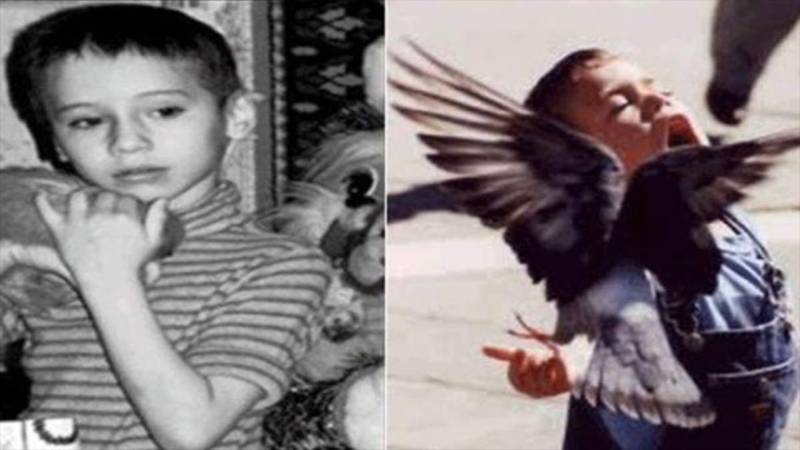
Image: Animal World
He was put into an asylum where he received treatment to allow him to become more human-like. Thereafter, he was sent to a center for psychological care to further his journey to becoming more socially aware and accepted.
Madina – Russia
Madina was reportedly raised by dogs after her alcoholic mother Anna was incapable of taking care of her daughter. According to the police, her mother had ignored her for most of her life. The young girl ate off the floor with the dogs in the house, while the mother ate at the kitchen table.
She barely knew a word or two and fought with everyone on the playground. The only friends she had were the dogs, she played with them, and slept with them when it was cold in winter.
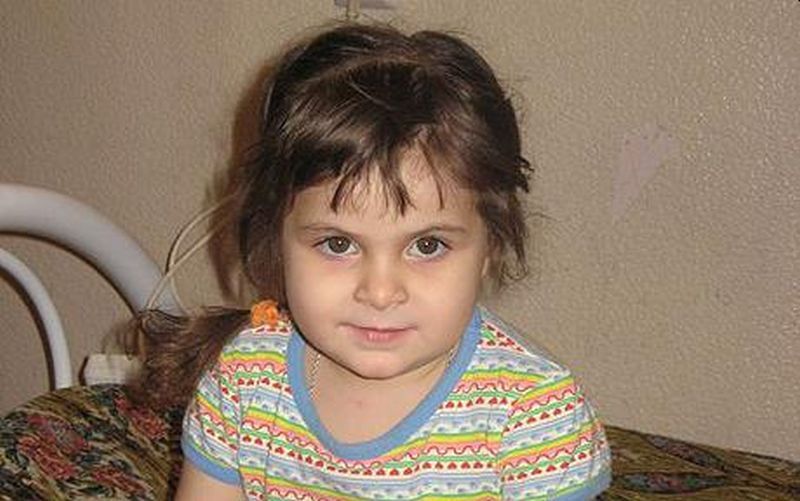
Young Madina who was cared for by dogs after her alcoholic mother neglected her | Image: Telegraph
She was discovered by social workers at her mother’s home on all fours and gnawing on bones with the dogs. The girl was sent to the care of authorities in Ufa, in central Russia, where she recovered from her unusual upbringing with the animals.
The doctors reported that the girl was mentally and physically healthy despite her experience, although her vocabulary was limited. Her father walked out on the family shortly after Madina was born.
Alex ‘The Dog Boy’ – Chile
A ten-year-old boy, who was sheltering in a cave with 15 feral dogs in southern Chile, was rescued by police. Reportedly, the boy had been roaming the streets and scavenging with dogs for food. He was also believed to have suckled at the teats of a bitch who had just given birth.
After his parents abandoned him when he was just five months old, the boy had a disrupted childhood. He was put in a children’s home but time and again, the boy ran away only to be caught. Then, he managed to somehow enter under the protection of a huge dog pack to avoid capture.
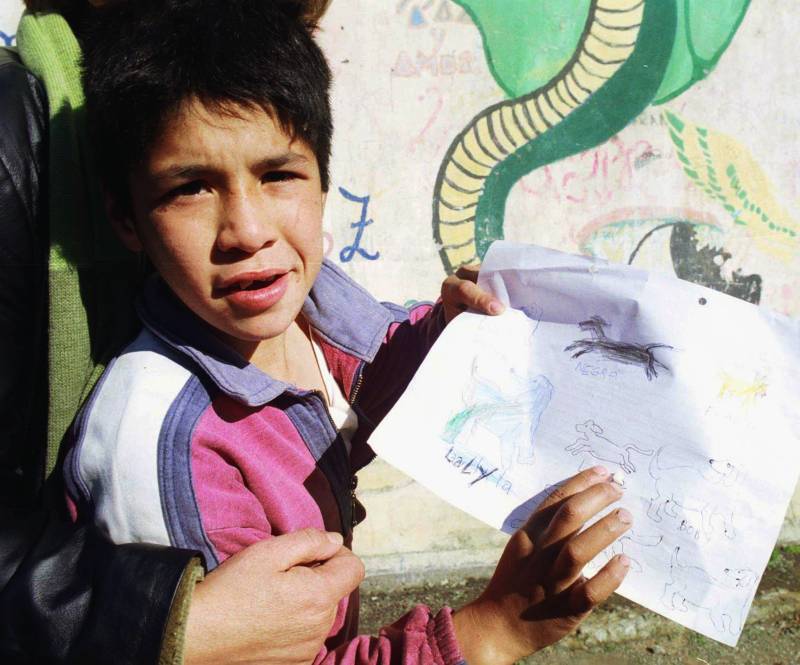
Image: The Sun
Unlike, other feral children – Alex could walk straight, he could speak, draw, and had little social etiquette. When the police tried to capture him, he fought hard and jumped into the water. He went into shock in the wintry Pacific Ocean, he was rescued and taken to the hospital.
He was treated for hypothermia and severe malnutrition before being released to a children’s welfare home. The social workers were optimistic about his having a normal life if he could get a loving and caring family.
Sasha T – Russia
Social workers found a malnourished toddler raised by goats in a dirty house. His mother had locked away the two-year-old boy, named Sasha T, in a room with the animals. The neglected child played and slept with the goats. He had never been taught how to speak, eat or use a potty.
When social workers found him, the mother was absent from the house and the boy was sitting in the ice-cold room, unclothed. The house was cold, dirty, and smelly. The social workers grabbed the boy and took him straight to the hospital.
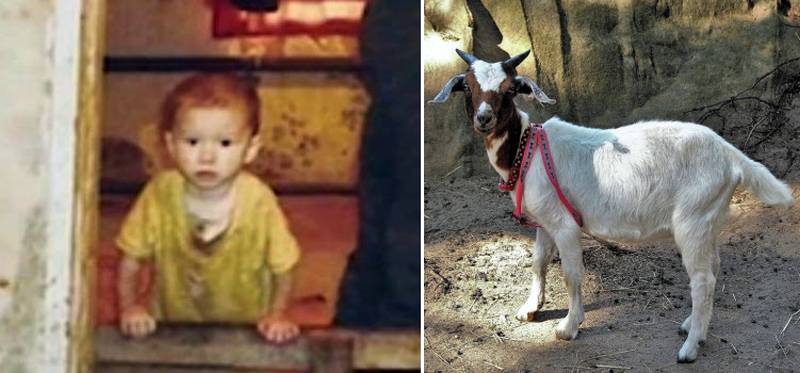
Image: Dailymail
According to the doctors, the child’s mind was not fully developed owing to the neglect and isolation from human contact that he lived in. The boy was scared of adults and always tried to sleep on the floor. He could not hold a spoon and never played with toys.
Authorities in Shakhti, Russia, refused to return Sasha to his mother.
However, there are few cases of feral children recorded in history, who did not live with the animals but were severely abused, neglected, and isolated from human contact. As a result, these children did not acquire language or any social etiquette. These cases show the inhumane and insensitive sides of human society.
Genie – California
Genie is the alias of an American feral child who was a victim of severe abuse, neglect, and social isolation. Her case was prominently recorded in the aspects of linguistics and abnormal child psychology. When she was about 20 months old, her father isolated her from her family, kept her in her locked room, strapped into a child’s toilet, or bound in a crib with her arms and legs immobilized, while forbidding her mother and brother to interact with her.
Genie was completely isolated from human contact except for her father who barely provided her food, never spoke to her, only barked and growled at her, and beat her if she ever made any noise or cried. The captivity prevented her from being exposed to any significant amount of speech and she, therefore, never acquired language during her childhood.
Her abuse came to the attention of Los Angeles child welfare authorities in November 1970, when she was 13 years old. Authorities initially arranged for Genie’s admission to the Children’s Hospital Los Angeles, where a team of physicians and psychologists managed to take care for many months.
Her father Clark Wiley, a very controlling man who hated noise, was charged for his treatment of his daughter but killed himself before the trial.
Genie became a sought-after case study for scientists. She quickly learned sign language and a few social manners but could not learn to speak. In 1978, her mother forbade all scientific observations and testing of Genie. Very little is known about Genie’s condition and her whereabouts since then, although, she is believed to be living in the care of the State of California.
Her story is the most depressing and inhumane in the cases of feral children.
Danielle Lierow – Florida
Danielle’s case was horrific as she had to live for years in filth with bugs crawling all around her and over her. In 2005, a police officer responded to a call from a resident of Plant City, Florida. The resident had seen the face of a little girl in the window of a run-down rental home nearby and was concerned about possible child abuse.
When the authorities arrived at the home, they found a woman living in a nest of cockroaches, filth, and spiderwebs, with food and feces smeared on the walls. In the midst of this nightmare was then six-year-old Danielle, who was severely malnourished and wearing a soiled diaper.
The girl was removed from her mother’s custody immediately and sent to the hospital for care and observation. Although there was no way of knowing the extent of the abuse the feral child had endured, based on the circumstances in which she was found, the doctors assumed that she had never been cared for beyond basic sustenance. They doubted she had ever been taken out in the sun, sung to sleep, even hugged or held.
The extreme abuse and neglect had caused Danielle to retreat into herself, her behavior and skills were similar to that of an infant. It was declared by the doctors that her abuse would leave her permanently and severely damaged. She spent six weeks at the hospital and then she was put in a group home in Land O’Lakes.
When she was 8 years old, Danielle acted like a 2-year-old, still wore diapers, and could not speak or eat. In 2007, she was adopted by a very humble and caring couple, Bernie Lierow and his wife Diane. They took care of her through her tantrums till she was 18, but she grew difficult to handle.
As she became eligible for Social Security and Medicaid, she was sent to live in a group home. Bernie still visits her regularly, unsure if she understands anything or not, though she seems to enjoy his company and often laughs with him. She still does not talk.
Nature vs. Nurture Debate
The long-prevailing nature vs. nurture debate of human behavioral development has inspired many theories and studies. It involves whether human behavior is determined by the environment (either parental or during a person’s life) or the person’s genes. Nature is what people think of as pre-wiring (innate) and is influenced by genetic inheritance and other biological factors. Nurture is generally referred to as the influence of external factors after conception.
One side of the debate says that humans acquire all or almost all their behavioral traits from nurture, while the other side advocates that human behavioral traits develop almost exclusively from environmental influence. As both ‘nature’ and ‘nurture’ factors are found to contribute substantially, often in an inextricable manner, the debate seems to have reached an impasse.
Since the cases of feral children dawned on human society, people have been trying to unravel these mysteries. The reasons for the lack of language among feral children is widely discussed and debated among the intellectuals of the world.
Linguist Noam Chomsky’s language acquisition theory says that since the infant period, the human brain develops a structure known as the “Language Acquisition Device” (LAD) that enables children to pick up the grammatical principles of the language and learn to speak as quickly as they do. Chomsky’s theory clarifies the reasons for the lack of language and the inability to learn the language in the cases of feral children as they have never gone through the language learning process in the initial stage of life.
The LAD asserts that humans are born with the instinct or innate facility for acquiring language. It argues that unless children have a significant innate knowledge of grammar, they would not be able to learn the language as quickly as they do, given that they never have access to negative evidence and rarely receive direct instruction in their first language.
According to another theory, animals do communicate verbally, sometimes in sophisticated and complicated systems. But, the noises interpreted as being the meaningful clucking of a chicken boy or the howling of a wolf-girl, are in reality the disordered or pre-verbal vocalizations of a profoundly damaged child.
Co-Existence of Man and Wild Animals
The adoption of feral children by wild animals is truly inspiring and heart-touching. These cases of feral children living with wildlife creatures display the simple fact that man and wild animals can co-exist in harmony. But the lack of understanding of each other’s innate nature makes it difficult to survive and thrive together.
It is a universal truth that we fear what we don’t understand, and man and wild have misunderstood and feared each other for as long as we can remember. Man has always tried to tame the wild and there is no exception with the cases of feral children.
Human society tries to teach and civilize the feral children, and get them to sit and talk properly. Could that be the reason for the everlasting tension between man and wild?
In some cases of feral children, after separating from their wild companions, the children have died, raising the question of whether it was a wise action to try to integrate them into human society after severance from the free spirit of the wild.
FAQs on Feral Children
Q: What Classifies a feral child?
A: Feral children, or wild children, are children who have grown up with limited or no human contact after being subjected to either accidental or deliberate isolation.
Q: Why do children become feral?
A: A child becomes feral after being subjected to deliberate or accidental abandonment or isolation. There have been many cases of feral children, many of which are on this list, where parents kept their child with animals and limited human contact, consequently resulting in developmental problems. Others cases observe accidental abandonment, where children were adopted by wild animals and learned animal behaviors.
Q: Can feral children learn to live in society?
A: Evidently, many feral children managed to learn social etiquette. However, their development toward social behavior was somewhat limited. For instance, they could only manage to speak and write a few words, eat with cutlery, and sleep in the bed. There are numerous feral children cases where children could never learn social behavior, remained reserved and behaved like animals.
Q: What social behavior do feral children find most difficult to develop?
A: Having been in limited or no human contact, feral children lack basic social skills. The skills they find most difficult to cultivate upon reintroduction to human society include tunability to learn to use a toilet, having trouble walking upright after walking on all fours among animals, or lacking interest in human activity around them.
Q: How do feral children communicate?
A: Feral children who have lived with animals, communicate by making animal noises. For instance, a feral child living with wolves or chickens will make noises that sound like those animals’ communication vocalizations. However, it is not the same as animals’ communication systems as animals have sophisticated and complicated systems to converse with each other.
Q: Who was the first documented feral child?
A: Victor of Aveyron, also called the Wild Boy of Aveyron (1788-1828), was the first documented case of a feral child. He was a French feral child who was found at the age of nine.
Q: Who first studied feral children?
A: The study of feral children goes back to Carl Linnaeus’s 1758 classification of loco ferus, which means feral or wolf men. He characterized feral children as four-footed, nonspeaking, and hairy beings.
